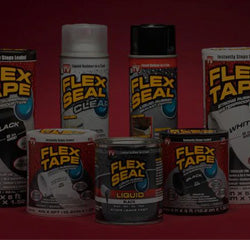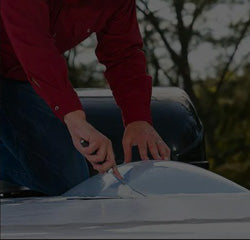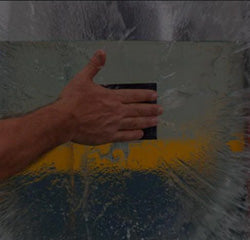DIY Car Repairs with Flex Seal Spray
“DIY Car Repairs with Flex Seal Spray” was written by a member of the Flex Seal Editorial Team.
If you own a car, you know minor problems can quickly turn into expensive repairs. But a little preventive maintenance can go a long way when you have Flex Seal Spray. This powerful waterproof sealant is an easy-to-use solution to help protect your vehicle and extend its life. In this blog, we’ll show you two simple car maintenance projects that can help you save money, improve performance, and keep your car looking sharp. Keep reading to learn how to use Flex Seal Spray for DIY car repairs.
Note: Before using Flex Seal Spray, read all directions carefully and use proper safety precautions such as wearing protective gear and applying the product in a well-ventilated area.

Protect Your Roof Rack
Roof racks are constantly being exposed to the elements. Without proper protection, rust, corrosion, and weather damage can weaken the rack and shorten its lifespan. Flex Seal Spray helps create a strong weather-resistant barrier against rain, snow, heat, and more.

Steps
1. Clean and Prep the Surface
Remove dirt, debris, grease, and grime from your roof rack and dry it thoroughly. If the rack shows signs of rust, use a wire brush or fine-grit sandpaper to remove as much as possible for the best long-term protection.
Flexpert Tip: Tape off or cover any areas you do not want to get Flex Seal Spray on.
2. Apply Flex Seal Spray
Shake Flex Seal Spray vigorously for about 30 seconds to mix the formula properly. Then, hold the can 8–12 inches from the surface and spray in short, sweeping motions, overlapping each pass slightly. This helps avoid streaks and ensures an even coat.
Flexpert Tip: Don’t just spray directly on problem spots; aim to cover a larger area than the damage and feather the edges. This helps create a seamless protective layer.
3. Let it Dry and Add More Coats
Allow 24-48 hours for Flex Seal Spray to dry, and then apply additional coats as desired. We recommend applying multiple thin coats rather than one thick layer to the surface. This will help create a more durable, uniform finish.
Flexpert Tip: Make sure to allow each coat to dry before applying the next.
Protect Undercarriage from Rust
Your vehicle’s undercarriage takes a battering, from loose gravel and road debris to salty winter roads and muddy puddles. Over time, this leads to rust, corrosion, and potential structural damage. Using Flex Seal Spray on the undercarriage can help protect metal surfaces and seal out moisture.
Important Information: Do NOT apply Flex Seal to the inside of an engine, on moving components, or near gas tanks/gasoline.

Steps
1. Inspect and Clean the Undercarriage
Use a flashlight to check for rust, cracks, or holes. Clean the area with a pressure washer or hose to remove dirt and salt. Let it dry completely before applying Flex Seal Spray.
Flexpert Tip: Remove existing rust spots with sandpaper before moving on to the next step.
2. Apply Flex Seal Spray
Shake your can of Flex Seal Spray vigorously for about 30 seconds. Then, hold the can 8–12 inches from the surface and spray in short, overlapping motions, working methodically to cover the entire surface. Pay extra attention to wheel wells and joints where rust is most likely to form. Allow 24-48 hours for Flex Seal Spray to dry.
3. Build Up Protection with Multiple Coats
Multiple thin coats will give you a stronger, longer-lasting protective barrier against rust and road damage. Once your first coat is dry, apply additional thin coats as desired, allowing each coat to dry before applying the next.
4. Inspect Annually and Reapply as Needed
A quick inspection every year helps you catch damage early. If you notice chips or worn spots, reapply Flex Seal to maintain full protection.

Want to know what else you can do with the power of Flex Seal? Check out these blogs:
By Amanda Tacconi
Amanda Tacconi is an Editor at The Flex Seal Family of Products, where she focuses on writing and editing articles for the company’s blog.






































